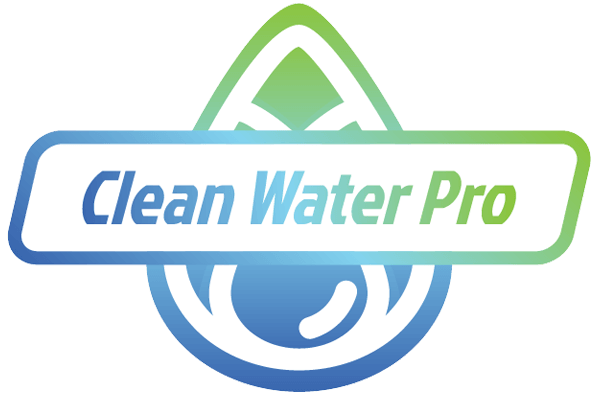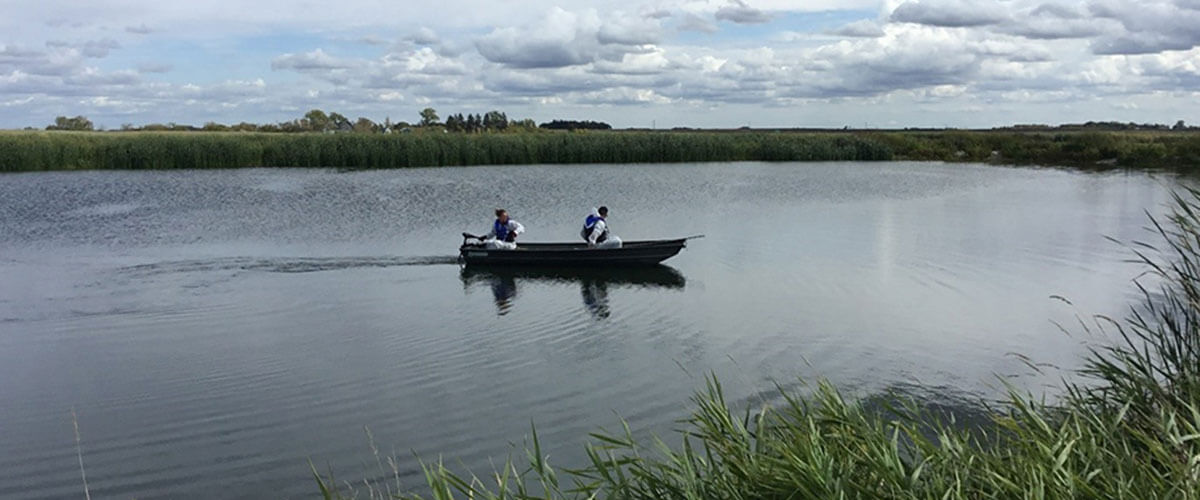Background
The wastewater lagoon was first built in the late 1950s and has been in operation since 1966. The lagoon property is owned by the Rural Municipality of Argyle. The wastewater treatment lagoon consists of a primary cell and a secondary cell.
The primary cell is 280ft by 280ft (0.79 hectare) and the secondary cell is 270ft by 470ft (1.32 hectare). The primary and secondary cells have a storage volume of approximately 12,267m³ and 18,760m³, respectively.
Both cells have a packed clay lining to prevent any seepage from discharging into the surrounding environment. The berms of the lagoon cells consist of a mixture of highly plastic clay and medium plastic clay with clay underlying the base of the lagoon area.
Proposed Action Plans
Two methods to remove the built-up sludge within the primary cell were considered.
The first solution was dredging the primary cell to eliminate the excess sludge. Frequently, lagoons require dredging because the holding ponds have reached or exceeded the original design capacity. The dredging process involves lowering the water in the primary cell and using dredging equipment to scrape up, load and transport the sludge offsite. This method is an expensive option, as equipment is required, and the sludge needs to be disposed of appropriately. Dredging may also damage the liner on the bottom of the cell and therefore caution needs to be taken while dredging.
The second option was to build a new wastewater lagoon for the town of Baldur. The current wastewater lagoon would have to be decommissioned. A new site would have to be selected, and a new plan engineered. This option is also very expensive. Additionally, this process takes many years. A faster, more effective solution was needed for this project.
Clean Water Pro’s Solution: Bioremediation
After considering all treatment options it was determined that Clean Water Pro would supply bacterial treatments to remove the sludge within the lagoon. The proposed treatment was beneficial bacteria tablets. These tablets contain targeted enzymes and natural bacteria such as Bacillus subtilis, Bacillus licheniformis, Bacillus megaterium and Bacillus thuringiensis.
These strong strains of sludge-removing bacteria are condensed into an easy-to-apply tablet designed to work at the problem source. When applied, beneficial bacteria tablets sink into the sludge and begin to break down organic materials. This removes the sludge and odour, improves water clarity, and eliminates aquatic vegetation growing within the lagoon. The treatment comes in a small tablet form and would be applied evenly across the desired area.
This method was chosen due to the simplicity, affordability, and versatility of the beneficial bacteria pellets. In addition, it does not require any mechanical or physical removal of the sludge.
Method For Measuring Sludge Reduction
To measure bacteria effectiveness, the primary cell would be monitored, and sludge depths would be measured in the spring and fall. To confirm the sludge depth is accurately measured, a boat would be launched on the primary cell, and measurements would be taken in a 6 x 6 grid system with a total of 36 sludge depth samples. This 6 x 6 grid system would be used each time Clean Water Pro measured the sludge depths to ensure each sludge depth site could be compared accurately from year to year.
2018 Recommendations & Findings
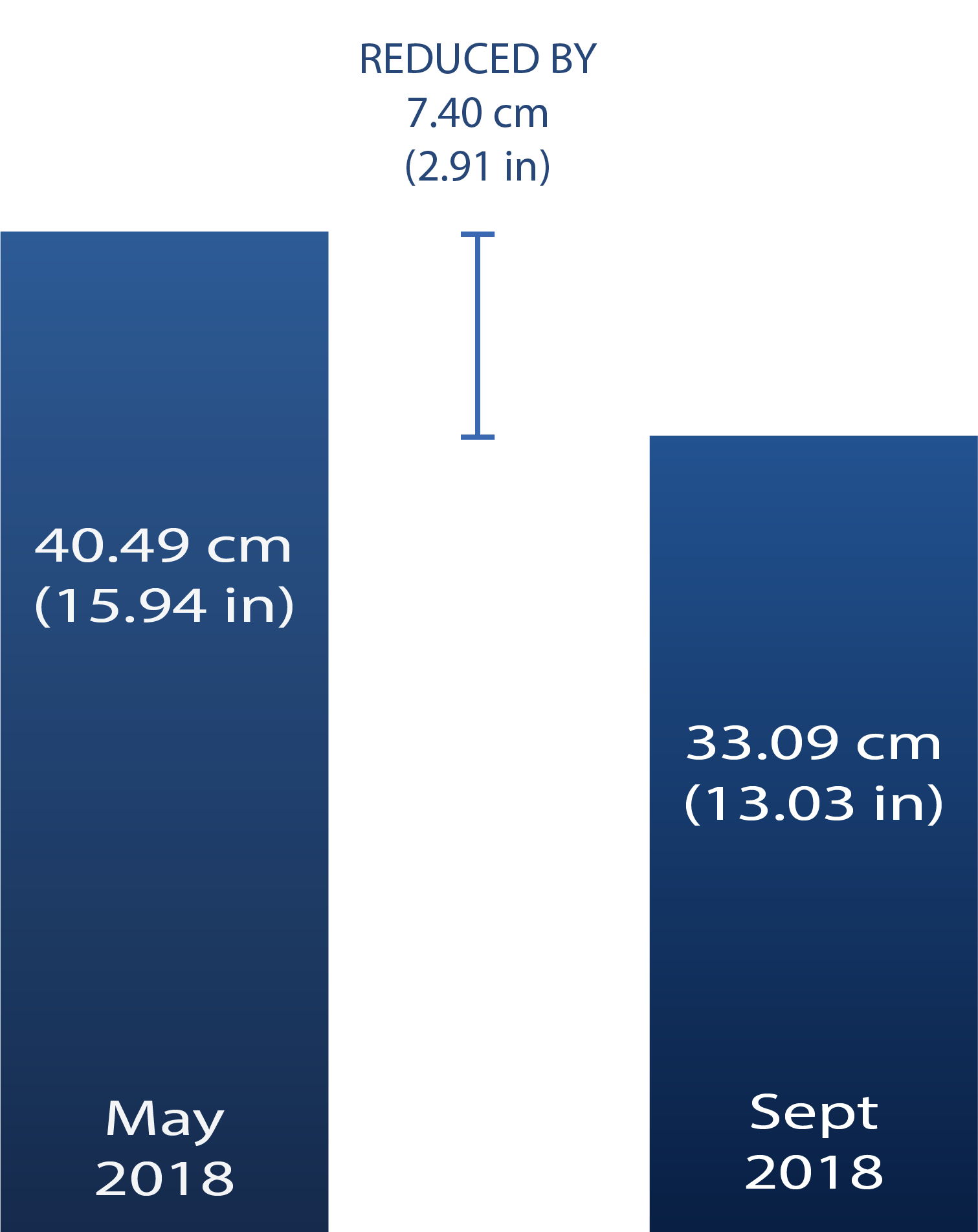
Clean Water Pro recommended that 2.75 lbs. of treatment be spread evenly throughout the primary holding cell on a weekly basis for 20 weeks. These treatments would be applied by RM of Argyle staff.
Clean Water Pro analyzed the data collected from the sludge samples from May 17th and September 25th, 2018. On May 17th, the average sludge depth was 40.49 centimetres (15.94 inches). On September 25th, the average sludge depth was 33.07 centimetres (13.07 inches).
The average sludge depth in R.M of Argyle’s primary lagoon cell was reduced by 7.32 centimetres (2.91 inches) or 19.92% within the four-month treatment period. This measurement does not allow for the inflow of new sludge during this time. Darcy Dearsley, personal communication at the Baldur Lagoon, stated that he could “see a reduction of the sludge along the edges of the cell.
2019 Recommendations & Findings
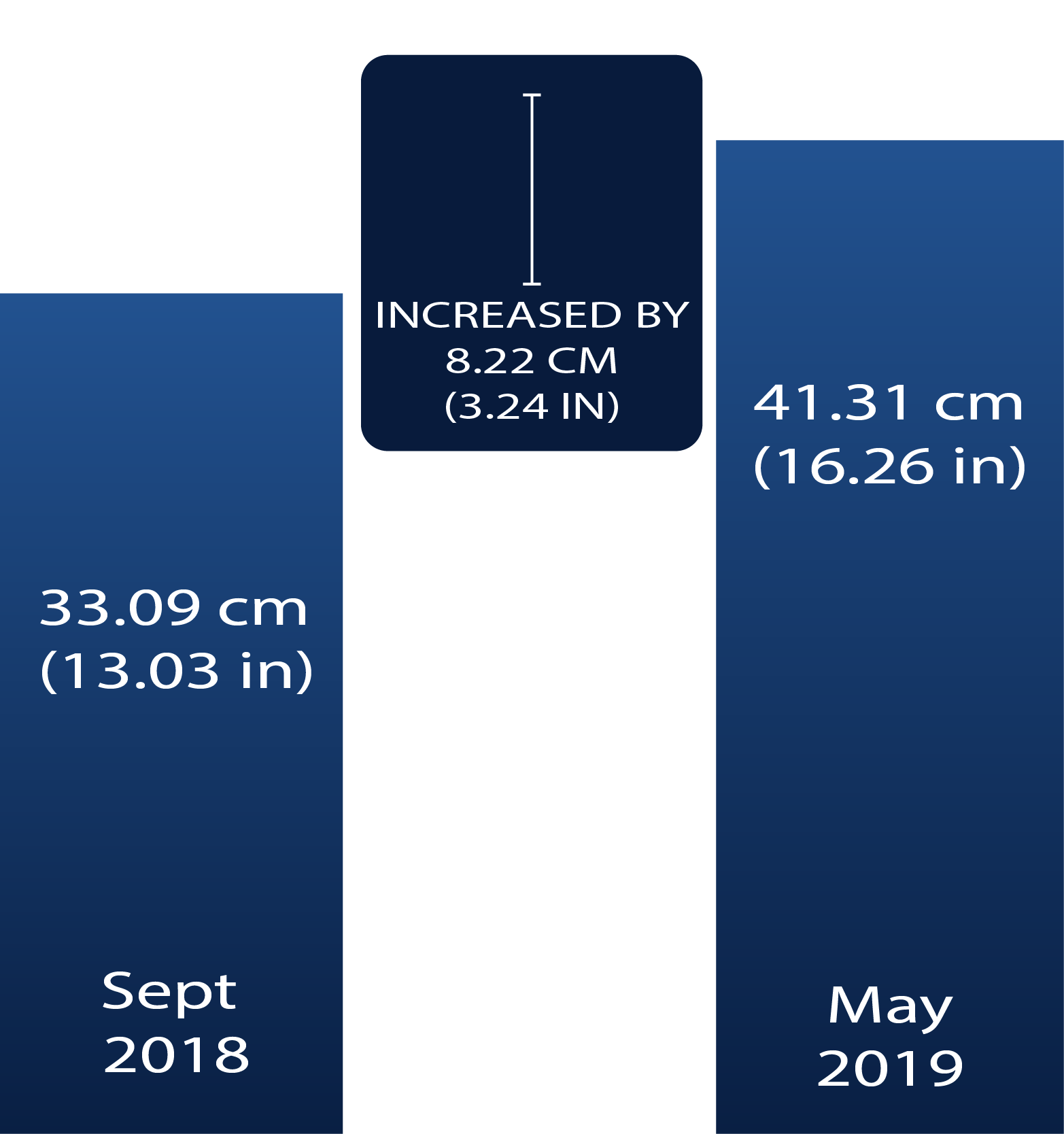
In 2019, Clean Water Pro recommended to the RM of Argyle that treatment dosage should be increased within the primary lagoon cell. This application was therefore increased from 2.75 lbs. per week to 4.0 lbs. per week.
Clean Water Pro conducted sludge depth measurements on May 21st, 2019, and September 24th, 2019. On May 21st, 2019, the average sludge depth within the primary cell was 41 centimeters (16.14 inches). This is an 8.2 centimeter (3.23 inch) increase since September 24th, 2018. It should be noted that treatment was not applied during the winter months, therefore an increase in the sludge depth during this time frame was expected.
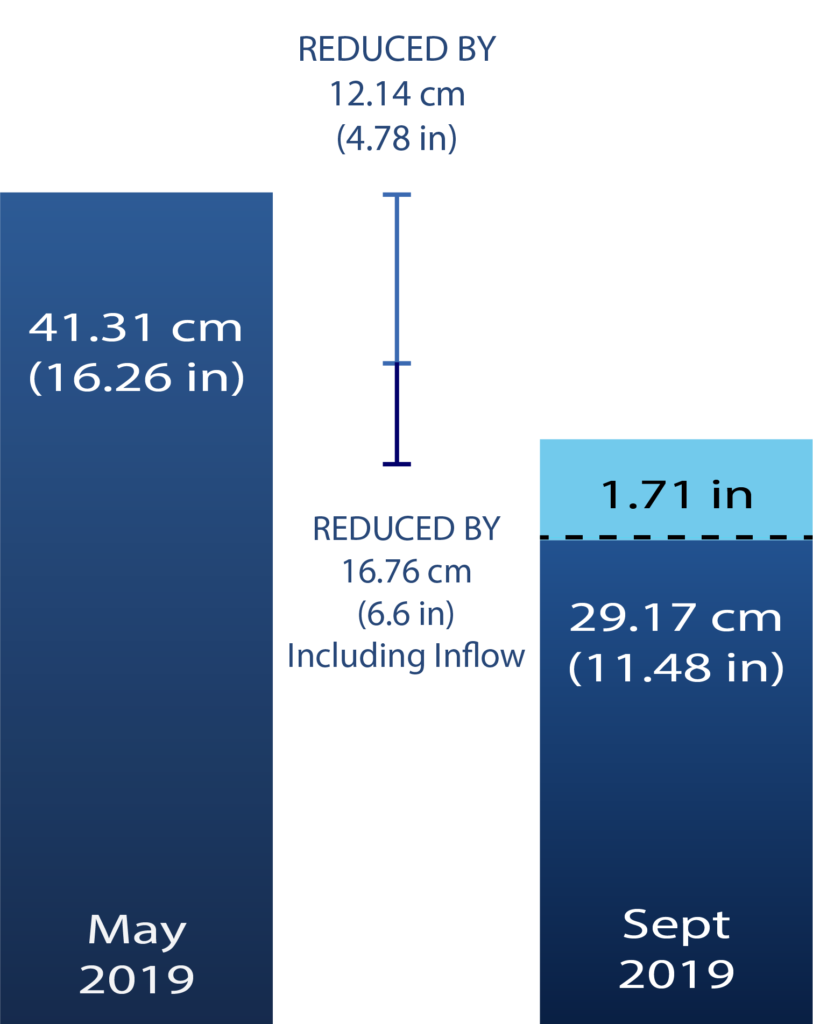 On September 24th, 2019, Clean Water Pro returned to the lagoon and measured the sludge depths again to determine the muck reduction after 4 lbs. of treatment per week. The coordinates of the sites measured remained unchanged.
On September 24th, 2019, Clean Water Pro returned to the lagoon and measured the sludge depths again to determine the muck reduction after 4 lbs. of treatment per week. The coordinates of the sites measured remained unchanged.
The average sludge depth was 29.17 centimeters (11.48 inches). The average sludge depth in the R.M. of Argyles’ primary lagoon cell was reduced by 12.14 centimeters (4.78 inches) or 33.6% within the four-month treatment period of summer 2019. Including inflow, 6.6 inches of sludge was eliminated during the season.
2020 Recommendations & Findings

Sludge depth measurements were collected at the 36 sites on May 25th, 2020, and September 8th, 2020. In spring 2020, it was determined that the average sludge depth in the primary cell was 34 centimetres (13.39 inches). This is an increase of 4.8 centimetres (1.89 inches) since September 2019.
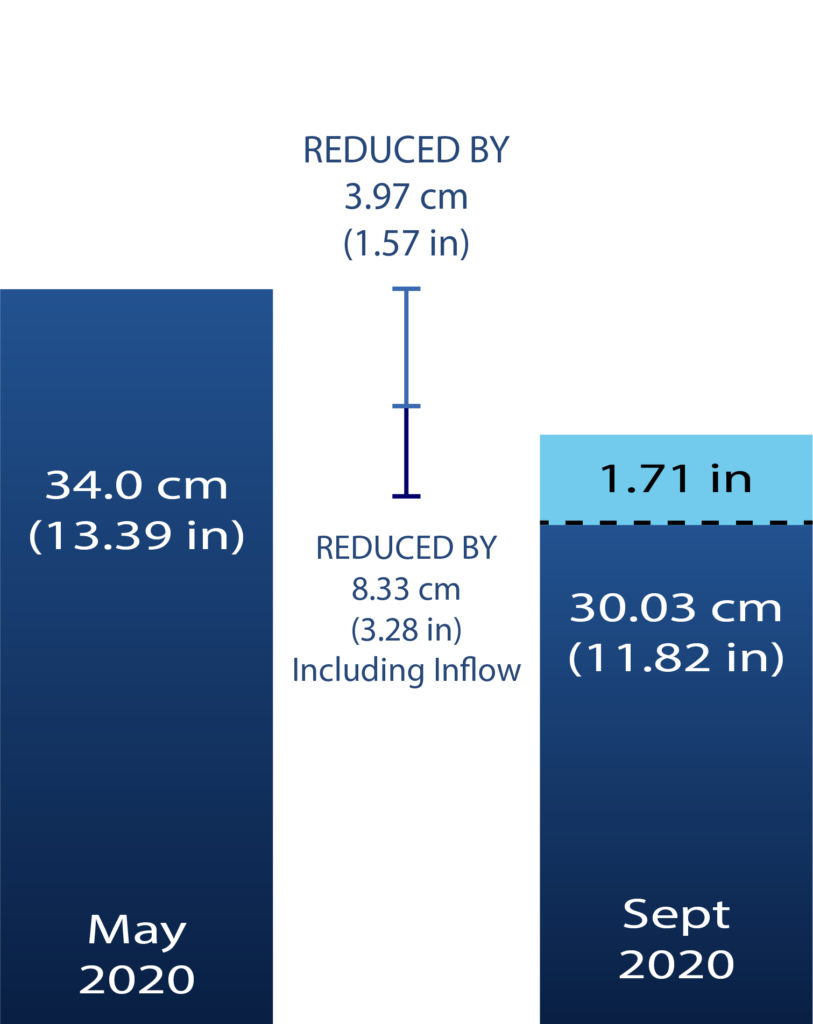
Clean Water Pro recommended to maintain the 4 lbs per week dosage over 20 weeks.
In the fall of 2020, the average muck depth was 29.6 centimetres. The overall muck depth decrease between the spring of 2020 and the fall of 2020 is 3.97 cm.
This is less than the previous years because of Inconsistent applications due to covid restrictions and low water levels due to the drought conditions.
2021 - 2023 Findings

In 2021, the lagoon was treated with 4lb of bacteria once a week for 20 weeks by the RM of Argyle staff. There were no measurements taken.
In 2022, we moved to a maintenance level of treatment. The maintenance level was 1.25 lbs of treatment spread at the inflow and on the dumping area of the wastewater lagoon. There were no measurements taken.
In 2023, we returned to measure the lagoon.
On the 18th of May, 2023, an average muck depth of 28.4 cm was measured (11.18 inches).
Sludge was reduced by 2.21 inches since the Spring of 2020, and an overall decrease of 4.76 inches since treatment began in 2018. Keep in mind that treatments were applied from May until September and not during the winter months. The measurements also do not allow for the inflow of new sludge in the cell; therefore one can assume that the treatments reduced the sludge significantly more.
